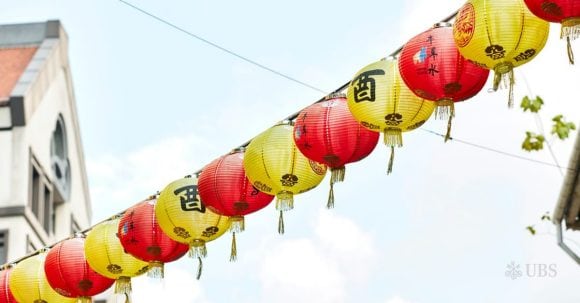Will China beat the USA and lead the tech revolution?
Whether it’s robotics, e-commerce or 5G networks, China is at the forefront of technological development, but will they make it to the top spot?

In 2015, the Chinese government issued the Made in China 2025 program, a plan to move away from being “the world’s factory” and become a global leader in technology. AI, robotics, electric cars and green energy are among the key industries of the initiative. The goal is to maintain economic growth, improve standards of living for the 1.3 billion Chinese people and claim the pole position in the race for being the most innovative global player.
Since the end of the Mao era in the late 1970s, China has made incredible progress with hundreds of million people moving out of poverty. “That almost surely would not have happened without globalization,” explains Joseph Stiglitz. It “enabled China to access global markets, international technology, international investment. No event in a very long time has had so much impact on the lives of so many people.”
Globalization enabled China to access global markets, international technology, international investment.
The Chinese growth model for 40 years has been based on what economists call a comparative advantage. “That comparative advantage has been labor-intensive manufacturing, with the entry point being the sewing trade,” says Michael Spence. Automation will foreseeably displace manufacturing labor to a certain extent and knock out the growth dynamics the Chinese success story was based on. Thus, the country is right in its attempt to further progress and move up the value chain.
“The organizing principle of global supply chains for 50 years was to find labor which is relatively immobile and build a supply chain that takes advantage of that labor. If technology is taking labor out of the equation, that won’t be the organizing principle anymore,” explains Spence.
So far, the efforts of the Chinese government to become a leading force in technology have shown remarkable results. “You have mobile payment systems. You have a collection of financial services with artificial intelligence,” says Spence. “You have digitally enabled ecosystems which enable new business models. This is a hugely positive development. This is a major set of options and opportunities.”
China is now one of the most advanced countries when it comes to building the necessary infrastructure for 5G networks. According to the International Energy Agency, it is the world’s largest market for electric cars. The World Economic Forum (WEF) predicts that China will also be the largest market for robots by 2022. A McKinsey Institute study shows that China accounts for 42 percent of the value of worldwide transactions and the value of mobile payments is 11 times that of the United States. Simply put, China dominates global e-commerce.
With all of this on the table, is their goal to become the global tech leader anything but probable?
You could see there was going to be a rivalry between the United States and China that was strategic, technological, economic.
“Ten years ago, you could see if China kept growing, there was going to be a rivalry between the United States and China that was strategic, technological, economic, and I think that’s now the reality,” says Spence. After Donald Trump took office in 2017, the country started to investigate Chinese trade policies. They claimed that China was violating intellectual property rights and eventually imposed tariffs on Chinese products. It was answered with a tit-for-tat response from Beijing.
“You can see the writings on the wall,” says Spence. “In multiple dimensions, the rivalry and the strategic concerns associated with it are going to start intruding themselves in the way the global economies put together investment flows, flows of knowledge and technology, maybe flows of people.”
China will be a great growth engine.
Nobel Laureate Myron Scholes thinks no matter the outcome between the two countries, that China’s success will be long lasting as it continues to grow. With a growing middle class, that is set to double within a few years according to the WEF, and more people leaving rural farming to start jobs in the tech sector, they have the labor force to power what could be the world’s innovation engine.
“A country that goes from nothing to where it is today can copy what’s successful and they have done that,” says Scholes. “As you become more competitive, you have to go off on your own. I really respect the Chinese people and their ability to innovate and create and compete in the world.”
Has this question inspired you?
Has this question inspired you?
Get the latest Nobel perspectives delivered to you.
Has this question inspired you?
Has this question inspired you?
Get the latest Nobel Perspectives updates delivered to you.




